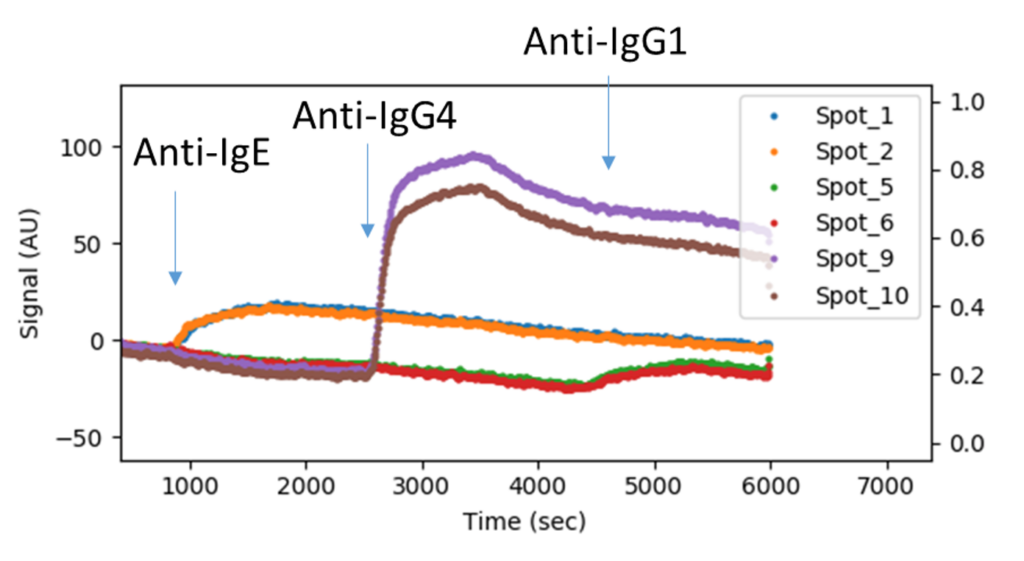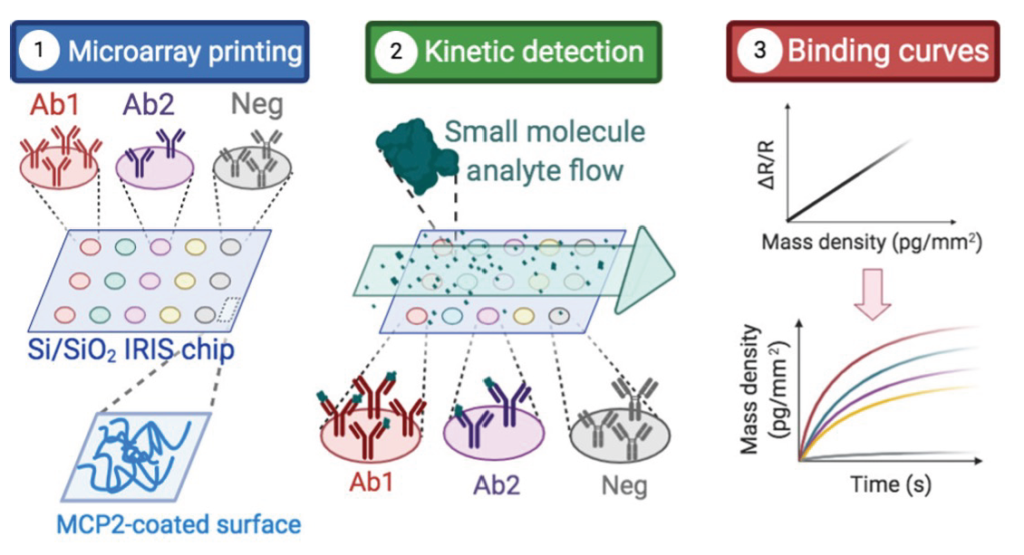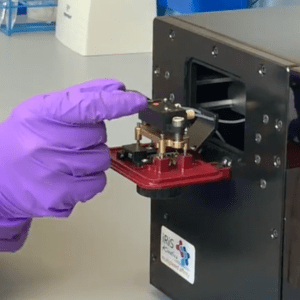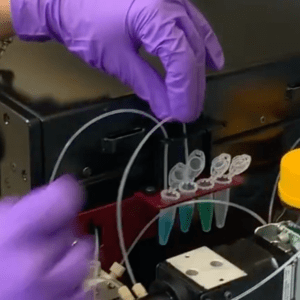
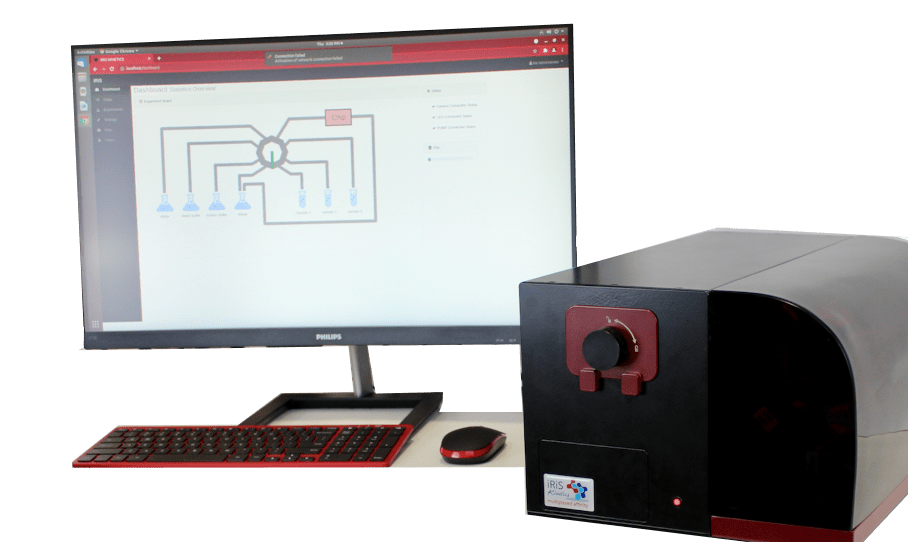
Biomolecular Affinity Measurement Detection System
Introducing an affordable way to obtain quality kinetic binding data. Until now, real-time label-free biomolecular interaction studies have been out of reach for some labs due to limited budgets. Analyses may also have been outsourced leading to delays in accessing the data for ongoing studies. The new compact, easy-to-use system, from Iris Kinetics, expands access to high quality data, making it available in your lab. Measurement of binding kinetics for antibody development and other applications are now within easy reach.
A list of publications on this technology is available here.
With a broad range of kinetic measurements, like binding affinity, association and dissociation rates (Ka and Kd), you can make informed decisions faster. The measurements are quantitative and calibrated to the mass of the adsorbed layer, while offering a dynamic range of 4 orders of magnitude in molecular weight. The low cost sensor chips can be used for single or multiplex biomolecular affinity measurements. The system is ideal for binding kinetics:
- Kinetic Characterization: Determine affinity rate constants
- Immunoassay Development: Assess antibody pairs, biotinylation, reagent QC
- Small molecule studies: Observe protein binding without the DMSO ‘bulk effect’
- Virology: Selectively capture biological nanoparticles
- And much more
Key Benefits of a Benchtop Label-Free Reader:
- Low maintenance – no need for dedicated personnel
- Low cost – The low cost and simplicity of operations makes this accessible to every researcher
- User-friendly – So easy to use, you can get started in a matter of hours!
- Real-time data – No need to send samples out, or wait to get data from a shared facility.
- Ideal for – Publication quality data, lead optimization & validation, antibody selection, and biologics QC
- Get the biomolecular affinity measurements data you need from your own bench! No need to label molecules!
The admitted gold standard for label-free biomolecular affinity measurement is Biacore, now part of GE LifeSciences. However, these systems tend to be expensive, for both instrument and consumables, and require a qualified person to operate, typically, someone trained in biophysics. As an alternative, we propose a simpler system, that can be operated by a regular laboratory scientist. See a comparison of existing technologies here.
The iRiS Kinetics system is a versatile and affordable benchtop system for high-quality characterization of biomolecular interactions, with applications from R&D to QC labs.
One of the main attributes of the system is its ability to overcome the bulk effect, a background signal shift often seen when looking at the binding of small molecules from DMSO solutions. It can detect molecules as small as 250 MW. From start to finish, binding curves can be obtained in about 2 hours.
Perfect for the measurement of binding kinetics for antibody development, bioprocessing Quality Control. If you develop assays and need to select antibody pairs, this system is ideally suited as it can measure simultaneous curves for hundreds of proteins arrayed on the chip. Multiplex tests and microarrays are fully enabled by this label-free system. You can manually spot small arrays using specially coated chips, or larger arrays using a microarray spotter.
iRiS Kinetics MX-104
- Highly multiplexed (100s of probes),
- Quantitative,
- Repeatable,
- Highly sensitive (<250Da molecular weight),
Kinetic binding measurements
We cover the entire range of biological analytes including proteins, nucleic acids, peptides, and small molecules On a compact, robust, low-cost, fully-automated, and easy-to-use research instrument with versatile and inexpensive consumables
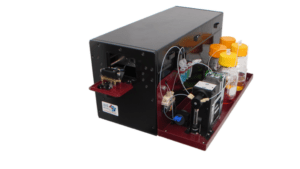
With cover off and tray open
- Fully automated
- Four tubes for samples
- Four bottles for wash, buer and waste.
- Minimum sample volume: 100 microliter
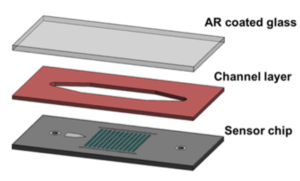
Iris microfluidic cartridges (patent pending)
- Channel height from 50µm to 500µm
- Chamber volume from 2µl to 50µl
- Easy to assemble and load
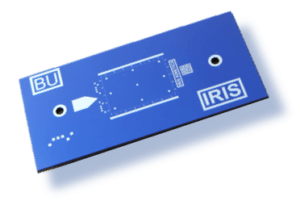
Iris sensor chips (patent pending)
- Low-cost – truly disposable, no more reusing old sensor chips!
- Oxide coating compatible with glass surface chemistries
- Intuitive on-chip markings and rulers
- Large sensor area (5mm X 7mm)
- Superb quality control
In the experiment shown to the right, allergen proteins were immobilized on the chip. Antibodies to those proteins were then injected sequentially. You can actually see the binding taking place, with this multiplex array spotted chip.
